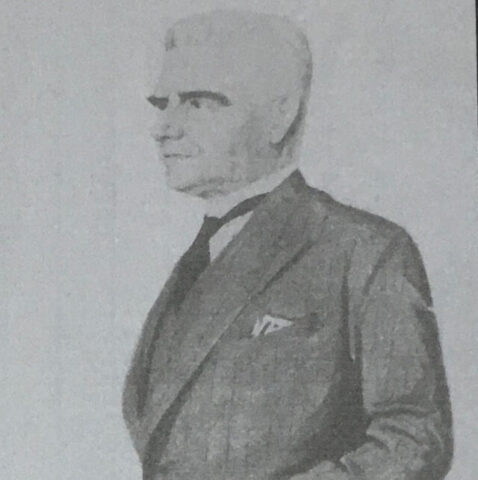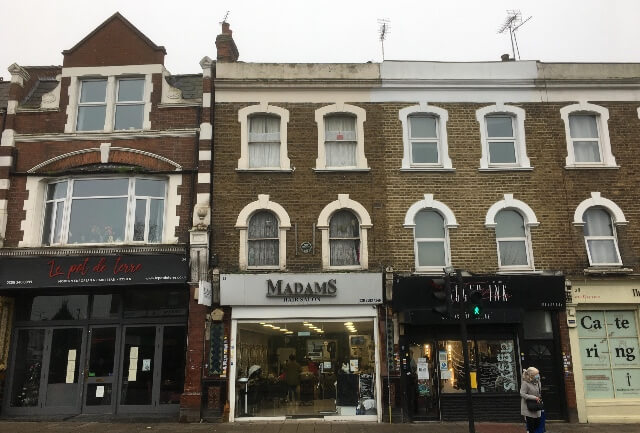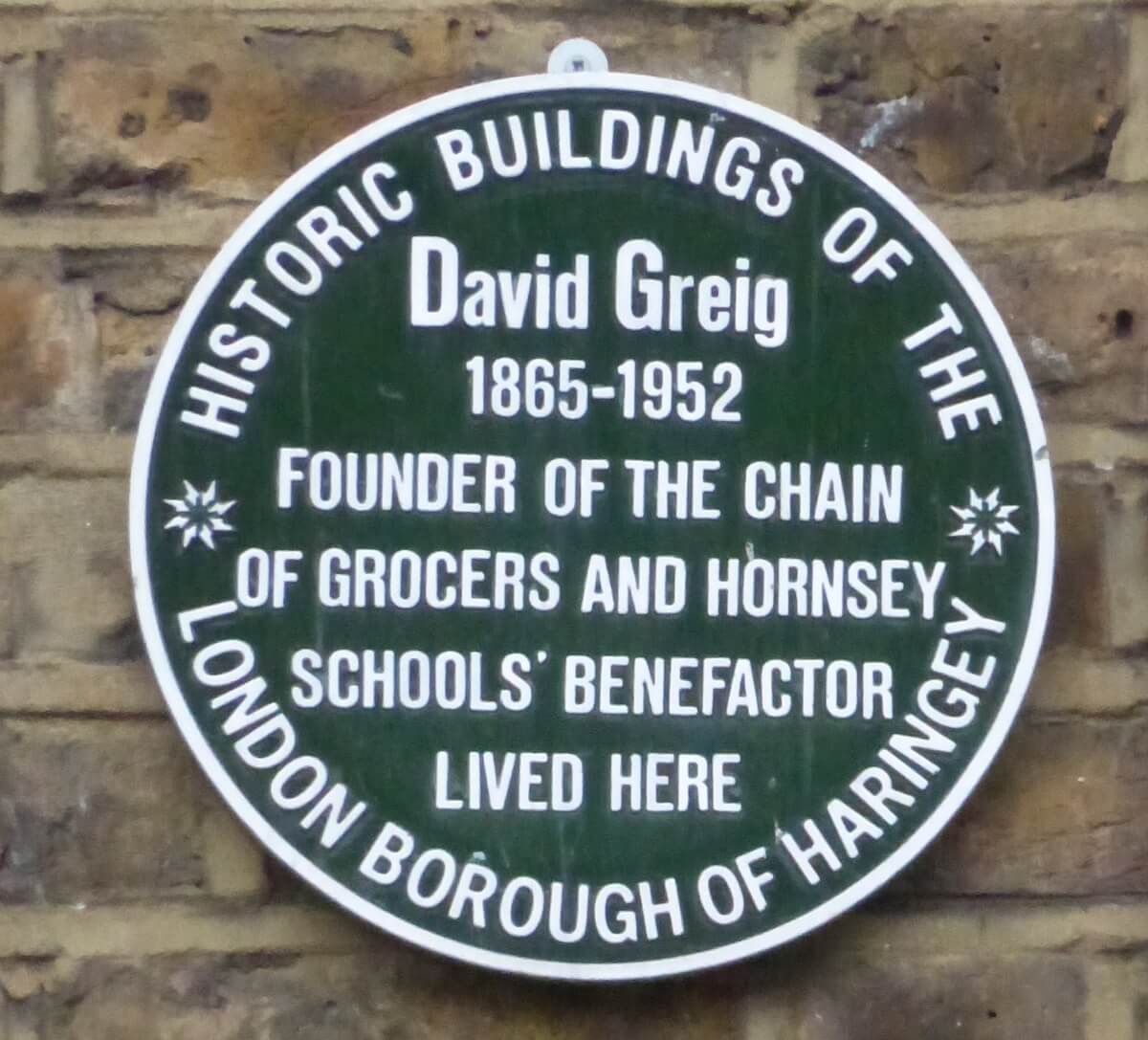This is the third article in our series – Hornsey Personalities of the Past
The capture of a Scottish sea captain by the French, another Scots’ decision to emigrate to Australia and his wife’s concern for her large family – all played a part in the foundation of David Greig Ltd. the first chain of grocery shops in the UK. It’s a story of courage, hard work, foresight, service to the public and an eye to profit, from the first small shop in Hornsey High Street to a chain of nearly 250 stores.
The move from Scotland

In early 1865 David Greig’s parents, David and Mary Ann Greig, plus baby daughter, arrived in London from Fifeshire. They intended emigrating to Australia but Mary Ann liked London so they stayed in the King’s Cross area and David found work as a joiner. Their son David was born that year. The Greigs had five girls and five boys – how to feed and clothe them all? Mary Ann remembered that when her grandfather’s man-of-war was seized by the French, her grandmother had opened a shop to raise money to feed her large family, so she decided to do the same.

Life at 3 St Mary’s Terrace
Mary Ann Greig was an expert cook so in 1870 with £5 capital she opened a shop in a newly-built part of Hornsey High Street (now No. 32) and started selling homemade food. She couldn’t afford scales so guessed the weights. Houses were being built all around and her business flourished. Her husband gave up his job to help. The family attended the iron Wesleyan Methodist Chapel in the High Street, were strict Sabbatarians and adhered to the principle of hard work. Soon Mary Ann added fresh meat to her enterprise. Young David, aged 10+, was sent daily to Hornsey Station to collect the Smithfield meat cuts which he carried home in a basket. He worked for his parents until he was 18.
The brave move to Brixton
David was ambitious and wanted the family to open other shops. His father refused so David left Hornsey and took a job in the provisions department of Barker’s, Kensington. In 1888, when he had saved £50, he looked for suitable premises in Brixton, an up-and-coming area with large, imposing houses surrounded by fields. He found a run-down grocer’s shop at 58 Atlantic Road and his father agreed to guarantee his credit at Smithfield Market up to £100. This was the era before refrigerators. Shops opened from 7.30am until 9.30pm, until 10.00pm on Fridays and midnight on Saturdays. Every week David left home at 5.00am to buy provisions for that day’s customers. On Saturday he returned to Smithfield, paid his bills and restocked his shop.
Marriage to his childhood sweetheart
In 1889, when the business was running successfully, David (24) married Hannah (Annie) Deacock whom he had met in the choir at Hornsey’s Wesleyan Church. They lived over the shop in Atlantic Road. Soon they had children. Nevertheless, Annie found time to help in the business. Her wisdom, sound judgement, advice and encouragement were greatly valued by David Greig as he ran his expanding business.
Rapid growth
The business grew rapidly so David needed more space and took over the sweet shop next door. He and three assistants sold the joints of 50 pigs, 40 sides of bacon and a ton of cheese every week. They couldn’t make sausages fast enough to meet demand. When a shop became vacant nearby Grieg bought it, starting the policy of opening new branches. As his business flourished, he moved his family to a large detached house on Brixton Hill which he named ‘Melrose’ after his mother’s birthplace.
The reason for Greig’s success
From the start his policy was to sell fresh food at competitive prices. If anything was left in a shop on Saturday night Greig would slash the price or give it away rather than let it get stale. He knew that people who received free food would tell their friends! Competition withered wherever a David Greig branch opened. By 1902 David Greig, now 37, had 16 shops and was making a net profit of nearly £6,000, (£786,788 at today’s purchasing power).
Disaster averted
Greig had a horror of borrowing money and never took out a loan or mortgage. One day in 1904 he bought four new shops and realised there was no money in the bank. All seemed lost. He rushed home to tell Annie that they were facing ruin. To his surprise she took the news calmly, telling him that she had been putting money aside since they married and had £3,000 saved in cash.
The prodigious worker
He worked long hours riding a bicycle to inspect and collect the takings of his London shops. He rode out the difficulties of the 1914-18 War and his grocery empire continued to expand. In 1930 he opened a head office in Waterloo Road, a massive building with Grecian columns and bronze decoration. The 1939-45 War brought bereavement and misfortune. His wife died in May 1941, shortly afterwards German high explosive and incendiary bombs hit the head office and a year later one son was killed on active service.
The end of an era
Greig carried on for another ten years, dying in January 1952, aged 86. Crippling death duties followed especially after close family died in quick succession. David Greig Ltd. celebrated its centenary in 1970 but the family sold the business in 1972. Within a few years ‘David Greig’, disappeared from supermarket frontages.

Hornsey Legacies and The Greig Trust
His name has never been forgotten in Hornsey. He was the Borough’s first Freeman. In September 2010 Keith Fawkes, HHS Chairman, and pupils of Greig City Academy attended the unveiling of a Haringey plaque in his memory on the wall of 32 Hornsey High Street.
He made generous educational endowments remembering the education he received at St Mary’s C of E School near his home. In 1925 the school was threatened with closure unless £2,000+ for alterations could be found. Greig gave most of this money and saved the school. In 1933 he permanently endowed it by creating the ‘David and Mary Greig Trust’ in memory of his parents. In 1949 he created an endowment for the school in memory of his late wife Annie and son Wilfred Victor, killed in the Second World War.
Through his generosity, St Mary’s Schools remained Church schools after the 1944 Butler Act. Each year The Grieg Trust invites Church schools educating Haringey children to apply for grants. In 2021, The Greig Trust acquired land next to St Mary’s CE Primary School, to prevent the development of more private housing on the site and to preserve it in the long-term for community and educational use. A fine legacy indeed.